#Shima peninsula
Explore tagged Tumblr posts
Video
20250214 Ise + Shima 6 by Bong Grit Via Flickr: 少し移動してさきしま半島の御座白浜へ。波打ち際は砂の色、少し離れるとエメラルドブルー、奥の海は碧い海。すごくきれいな海でした。 Photo taken at Goza-Shirahama Beach, Shima city, Mie pref.
#Rock#Beach#Goza-Shirahama#Sand#Sandy beach#Sands#Shore#Ago bay#Bay#Sea#Water#Sky#Blue sky#Sakishima peninsula#Shima peninsula#Shima#Mie#Japan#Nikon#Nikon Df#COSINA#COSINA Voigtländer COLOR-SKOPAR 20mm F3.5 SL2 N Aspherical#flickr
4 notes
·
View notes
Video
伊勢うどん by パメラ Via Flickr: ise udon
#food#dining#breakfast#brunch#Japanese food#Japanese restaurant#Japanese cafe#cafe#morning#Ise#Ise shima#Kii Peninsula#Japan#伊勢うどん#パイン#三重県#日本#伊勢志摩#cafe pine#flickr
20 notes
·
View notes
Text
short list of characters for my star blazers project
sorry if its a bit short, this is only like a couple, ill add more later
EARTH CHARACTERS Vice Admiral Juzo Okita (沖田十三) M61 Famed hero of the 2nd Battle over Mars. A stern, fearless stoic. Captain of the Yamato (UNS BBY-001) and formerly captain of the battleship Kirishima (UNS BBS-555). His battle strategies are nearly always high risk, high reward, and it miraculously always seems to work out perfectly.
Commander Mamoru Kodai (古代守) M27 Elder brother of Susumu and captain of UNS DDS-117 (JSS Yukikaze). His family was wiped out by an interplanetary bomb that struck the Miura Peninsula. Only he and his brother Susumu survived. He is shot down by the Gamilons while drawing their fire during Operation M so Okita could return home.
Commander-in-Chief Heikuro Todo (藤堂平九郎) M59 CinC of the Earth Defense Force. A calm, collected, reasonable man. Believes in the prioritization of morals over orders.
Admiral Kotetsu Serizawa (芹沢虎鉄) M55 Todo's right hand. A stern, angry, stubborn man. Harsh, immovable, but well intentioned. Reasonably disliked by the general public. Foil to Field Marshal Zöllick.
Lieutenant Commander Yuki Mori (森雪) F21 First mate aboard the Yamato, formerly a staff officer at EDF central command. Highly intelligent. A woman of great forethought and consideration. Kindhearted, consistently collected, fiercely believes in legitimate justice & the invalidity of sheer revenge, no matter how heinous the crime. Closely resembles the beautiful Sasha of Iscändar, who crashed on Mars.
Lieutenant Susumu Kodai (古代進) M19 Chief of the Tactical department. Hotheaded, righteous, brooding when upset. Mamoru's only surviving relative. Main protagonist of this story.
Lieutenant Daisuke Shima (島大介) M19 Friend and compatriot of Susumu. Yamato's Helmsman and Navigation department Chief. An expert navigator with an interest in astronomy. Calmer, more proper and more level-headed than Kodai. The exception being when Kodai is actually around, in which case Shima is even more rash and foolish than he.
Lieutenant JG Hajime Hirata (平田一) M21 An older fellow student at the Space Force academy when Kodai and Shima attended. A sort of "older brother" type friend to them.
Dr. Sakezo Sado (佐渡酒造) M54 A brilliant physician and a confidant of the Captain. Appointed as the ship's Medical department Chief despite no prior astronaval experience. A widely beloved drunkard. Cat person.
Makoto Harada (原田真琴) F21 Medic, officially a civilian.
Analyzer (AU09-Q1309) X3 AI companion of Dr. Sado and improvised autonomous subframe of the Yamato after the original was destroyed. Prefers to be called "Analyzer", as opposed to AU09 or Q1309.
Lieutenant Shiro Sanada (真田志郎) M28 Science and Technologies department Chief. A highly analytical and intellectually gifted man. His mind was designed to create machines. Highly emotionally intelligent, though bad at reading and expressing emotions. The Wave-Motion Gun is his brainchild.
Lieutenant JG Saburo Kato (加藤三郎) M23 Captain of the Yamato's Air Corps. Damn well coulda been born and raised in a cockpit, for the way he flies. Righteous, a little bit of a control freak. Close with Yamamoto.
Lieutenant JG Yasuo "Dash" Nanbu (南部"DASH"康雄) M20 Chief of Gunnery subdepartment of Tactial. Very much envies Kodai's position. About twice as hotheaded as Kodai, and 10 times as pigheaded. Excellent, loyal soldier, even if he disagrees with is commanding officers.
Ensign Yoshikazu Aihara (相原義一) M21 Operations department Chief and Comms officer. Reports to XO Mori. Sort of on-edge a lot of the time. Often overshadowed by those around him.
Ensign Kenjiro Ohta (太田健二郎) M24 Radar officer and Chief of the Space Weather Prediction subdepartment under Navigation. Eager and enthusiastically helpful. Bit of a mild Osaka hillbilly stereotype.
SP3 Haruki Ando (安藤春樹) M18 Wave-Motion Ballast & Shield technician. Brilliant kid, rushed through school with the goal of helping the cause against the Gamilons. Did not intend to be a soldier, merely a scientist, but is overjoyed nonetheless. Follows Kodai around like a duckling.
Kaoru Shintani (新谷かおる) M43 Chief OMCS technician. AKA, shipboard cook.
Lieutenant Commander Hikozaemon Tokugawa (徳川彦左衛門) M62 Chief engineer. Like Sado and Okita, quite brilliant, though quite odd. Former Chief engineer of the Kirishima. Very warm & paternal to all, considered the nice grandpa of the crew.
PO1 Sukeji Yabu (藪助治) M31 Tokugawa's favorite student. Cautious, introverted, kinda weird. Extremely intelligent. Refers to Starsha of Iscändar as a goddess.
Lieutenant JG Sho Yamazaki (山崎奨) M45 Tokugawa's official right hand.
Ensign Akira Yamamoto (山本明) F20 Another prodigy seemingly born to fly. Similarly to Kodai, she and her elder brother Akio were the only survivors of the early planet bombings by the Gamilons. ALSO similarly to Kodai, said elder brother died in Operation M. She and Kodai seem to keep ending up in bleak situations and having to save each other.
Ensign Hiroki Shinohara (篠原弘樹) M24 Deputy Captain of the ship's Air Corps. Quite unserious and smug in general. Very mature and insightful when the time calls for it. Never angry, and excellent mediator.
Lieutenant Akira Nemoto (根本明) M31 Captain of the Yamato's Marine Corps. Cold, quiet. Foolhardy, but a quick learner. Eager to kill Gamilons.
Corporal Kazuhiko Sugiyama (杉山和彦) M18 Deputy Captain of the ship's space Marines. Smug asshole most of the time, but humbles up quick when he deems it necessary. Doesn't like to take things too far. An EXCELLENT shot.
MCPO Isami Enomoto (榎本勇) M36 Boatswain's Mate. Kodai, Shima, and Hirata's former Practical Skills instructor. Simultaneously bubbly and friendly & strict and unforgiving.
PO3 Shinpei Iwata (岩田新平) and SP1 Kiyoshi Toyama (遠山清) M27 and M26 3rd deck operators. Inseparable. Idiots. Simultaneously fully competent and woefully incompetent. Often subjected to Enomoto's wrath.
WO2 Yuria Misaki (岬百合亜) F19 Member of the Supply department and self-proclaimed ESP haver.
WO2 Shigeru Hayashi (林繁) M18 Member of the Navigation department, plagued by visions (suffering from nightmares).
Lieutenant Kaoru Niimi (新見薫) F37 Chief of the Security department. Friend of Serizawa.
Lieutenant JG Shinya Itou (伊東真也) M21 Chief of the Armed Security department. Eerily friendly. Unnervingly polite. Gives of bad vibes.
WO1 Toru Hoshina (星名透) M19 Member of the Armed Security department. Love interest of Misaki.
17 notes
·
View notes
Text
The best places in the world famous for their superior pearls

Japan:
Akoya Pearls: High luster, perfectly round shapes, coastal waters (Shima Peninsula, Sea of Japan).
Australia:
South Sea Pearls: Large size (9mm to 20mm), satiny luster, white to golden hues, northern coast (Broome).
French Polynesia:
Tahitian Pearls: Dark, exotic colors (black, green, blue, peacock), cultivated in lagoons.
China:
Freshwater Pearls: Variety of shapes, sizes, colors, cultivated in rivers and lakes (Yangtze River basin).
Philippines:
Golden South Sea Pearls: Deep golden color, large size, warm waters around the islands.
Myanmar (Burma):
South Sea Pearls: Smooth surface, rich luster, Mergui Archipelago.
Indonesia:
South Sea Pearls: Golden variety, ideal conditions across numerous islands.
#3dmodelofjewelry#jewelrydesigner#jewelrycaddesigner#earrings#jewelry#jewelrymaking#bracelet#jewelry3d#jewellery#jewerly#pearls#pearl
4 notes
·
View notes
Text


Ferry Azalea Moored at Shimoda Port
Location: Shimoda Port, Shizuoka Prefecture, Japan Timestamp: 17:46 on June 6, 2023
The Ferry Azalea takes visitors from Shimoda Port to four of the seven-plus islands off the coast of Japan’s Izu Peninsula: To-shima (利島), Nii-jjima (新島), Shikine-jima (式根島), and Kouzu-shima (神津島).
These four islands offer a range of activities from camping under the starry skies to exhilarating motorcycle tours; from peaceful fishing excursions to thrilling snorkeling adventures; and from riding the waves while surfing to enjoying pet-friendly outings with your family.
The ferry provides convenient transportation to these picturesque destinations with prices for non-commercial vehicles varying from 10,180 yen to 20,350 yen, with an additional fuel charge. Departures take place daily at 9:30 a.m., ensuring you have ample time to explore and make the most of your island experience. On the day of your return, the ferry arrives back at Shimoda Port at 16:30.
To find more information, visit the Pix4Japan blog (https://www.pix4japan.com/blog/20230606-shimoda-city). I have curated all the necessary details and provided helpful links.
Fujifilm X100V with 5% diffusion filter ISO 160 for 1/250 sec. at ƒ/2.0 ISO 200 for 1/250 sec. at ƒ/2.0 Astia/Soft film simulation
#ストリートスナップ#静岡県#下田湾#フェリーあぜりあ#pix4japan#X100V#Fujifilm#street photography#Japan#Shizuoka Prefecture#Shimoda Port#ship#ferry
9 notes
·
View notes
Text
Akihabara (also Tateishi and Sarushima)

Akihabara! Tokyo's Electric Town! The city of neon lights, arcades, multi-story doujin shops, and a plethora of other wonders! The otaku paradise!!
youtube
Or... not? But first, we take a trip to the seaside, and then a trip to an island of monkeys! (sans monkeys, because reasons.)
Tateishi park, where my sandals became salted!
Across the peninsula there's a small park on the other coast called Tateishi. It's a pretty long walk from where I'm staying, but there's a nice sidewalk the whole way and it's pretty well shaded. It mostly features a beach somewhat protected by a rock that has a small shrine built-in. The whole time I was wandering the shore, my sandals were sitting up out of harm's way. After I was walking back out, a large wave came up and soaked them. I guess I didn't pray at the shrine hard enough, or something!
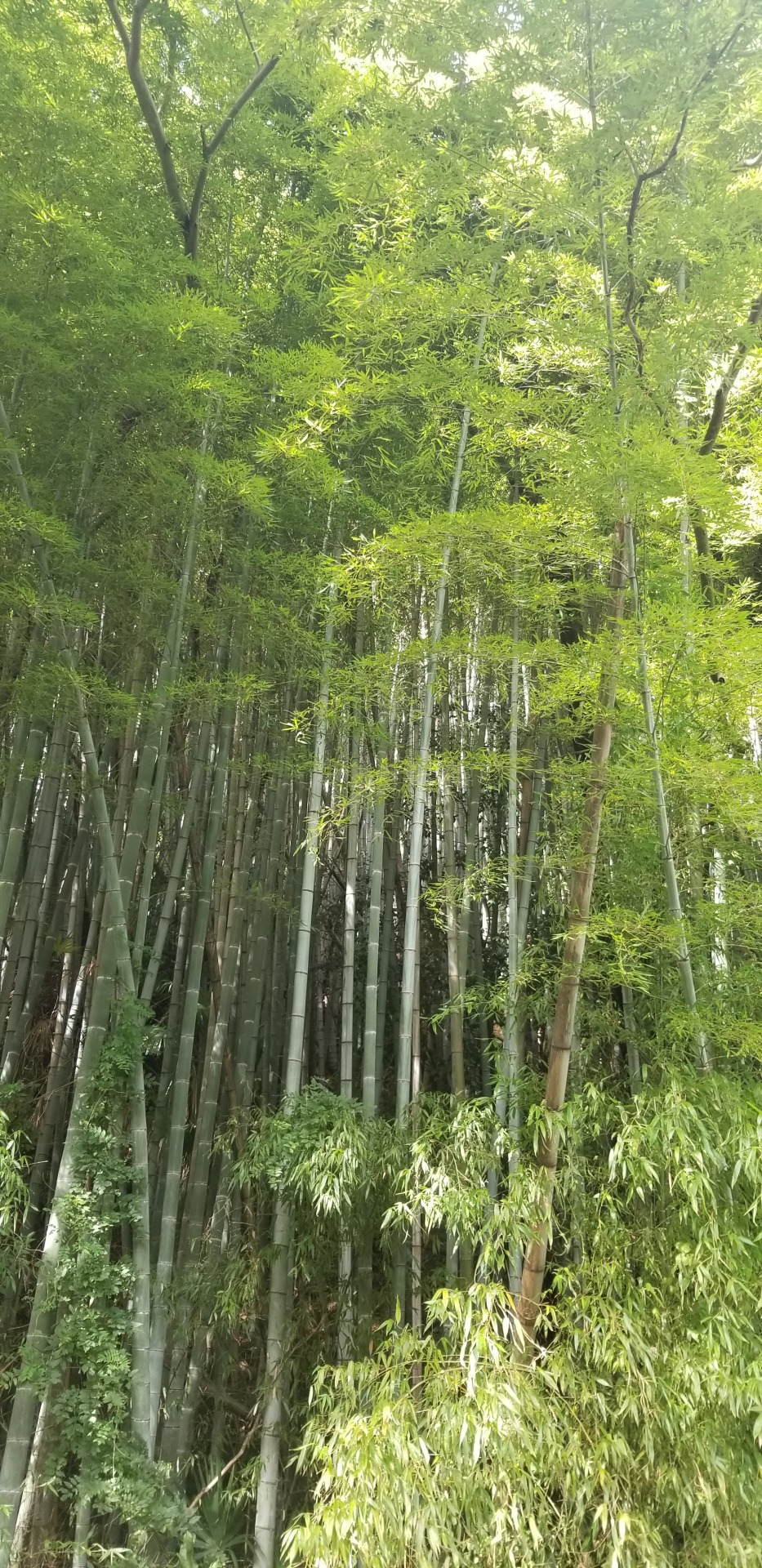

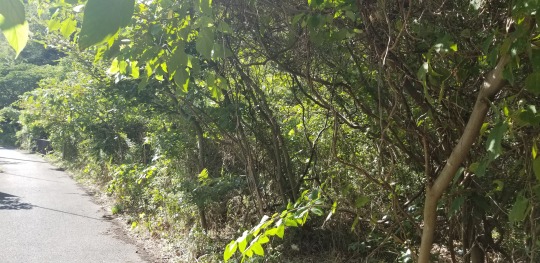

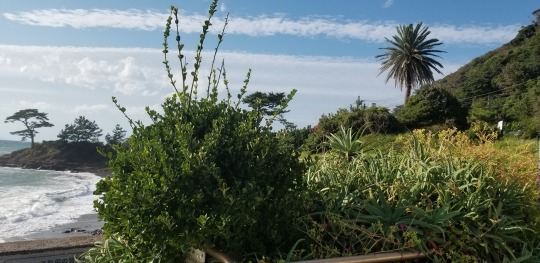


The Tale of Sarushima
A long time ago, someone was lost in Tokyo Bay until the ghost of a monkey appeared and led the poor soul to the safety of the island. It has been called Sarushima (Saru - Monkey, Shima - Island) ever since. Or so the story goes.
It's.. not as impressive as I had hoped. Most of the neat historical aspects were off-limits, the beach was closed for the season, and the route to the cave was closed off as well. One might have better luck in August. That said, the trip was totally worth it just for the ferry ride over, with the seemingly endless amount of moon jellies visible just beneath the water nearly the entire way.
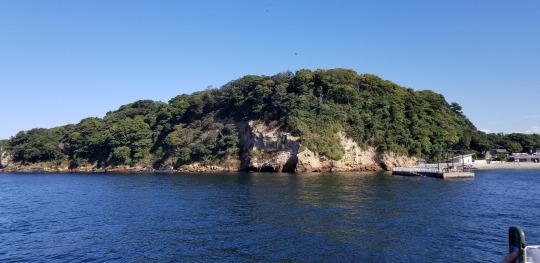

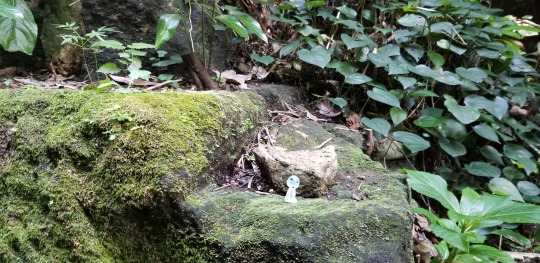
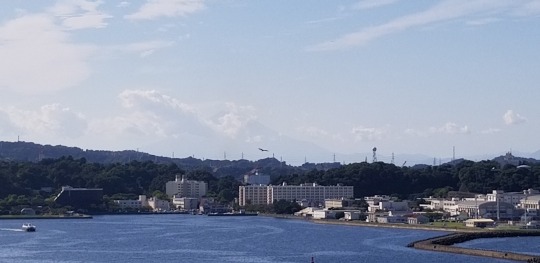



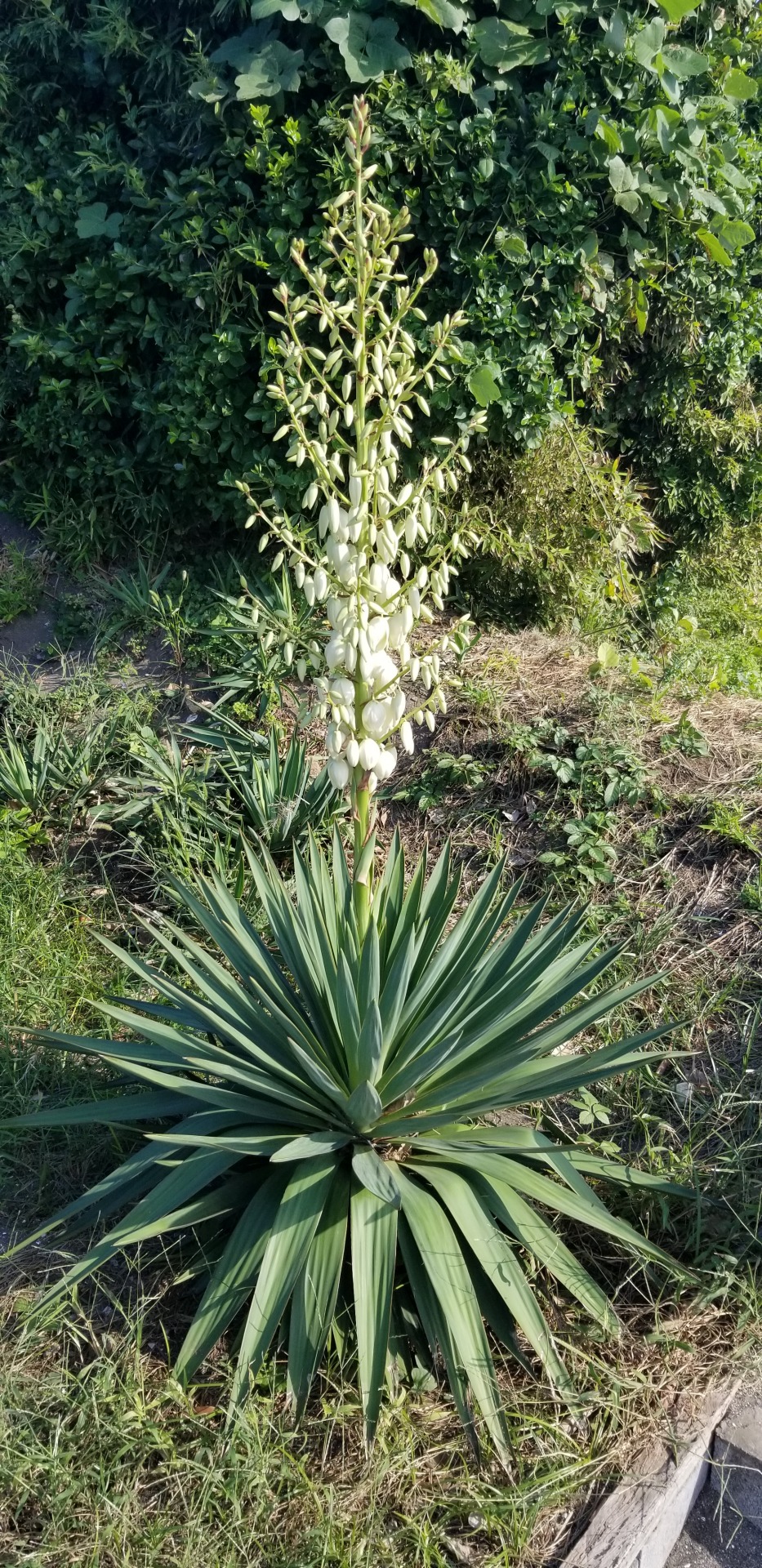

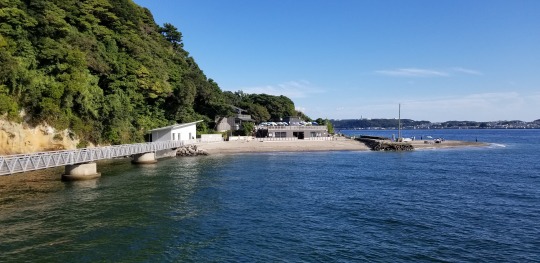
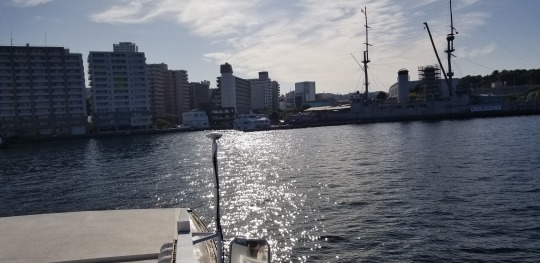

Akihabara
The otaku mecca was... disappointing? There were a tonne of things to check out, but the main areas seem to have been primarily taken over by used cell phone and laptop shops. Like, everywhere. Then there's the fact that everything seems to carry an Akiba tax (ie, things there are about 2x-3x more expensive than elsewhere, outside of general food). I found plenty of neat things that I couldn't afford, and honestly very little that I could get to say, look! I've been here!
There was a small shop FULL of retro gaming goodness whose name I sadly don't remember; it was to the side of one of the many alleys located in the basement. It would have all of your PC-FX and Towns Marty needs, if they didn't cost your first born. Still, wonderful to be able to see them in person and play with them.
It was also an overcast, rainy day and we arrived late, so we got to see maybe a quarter of the area. We didn't even get to Gamers! This of course means that I have to go back.
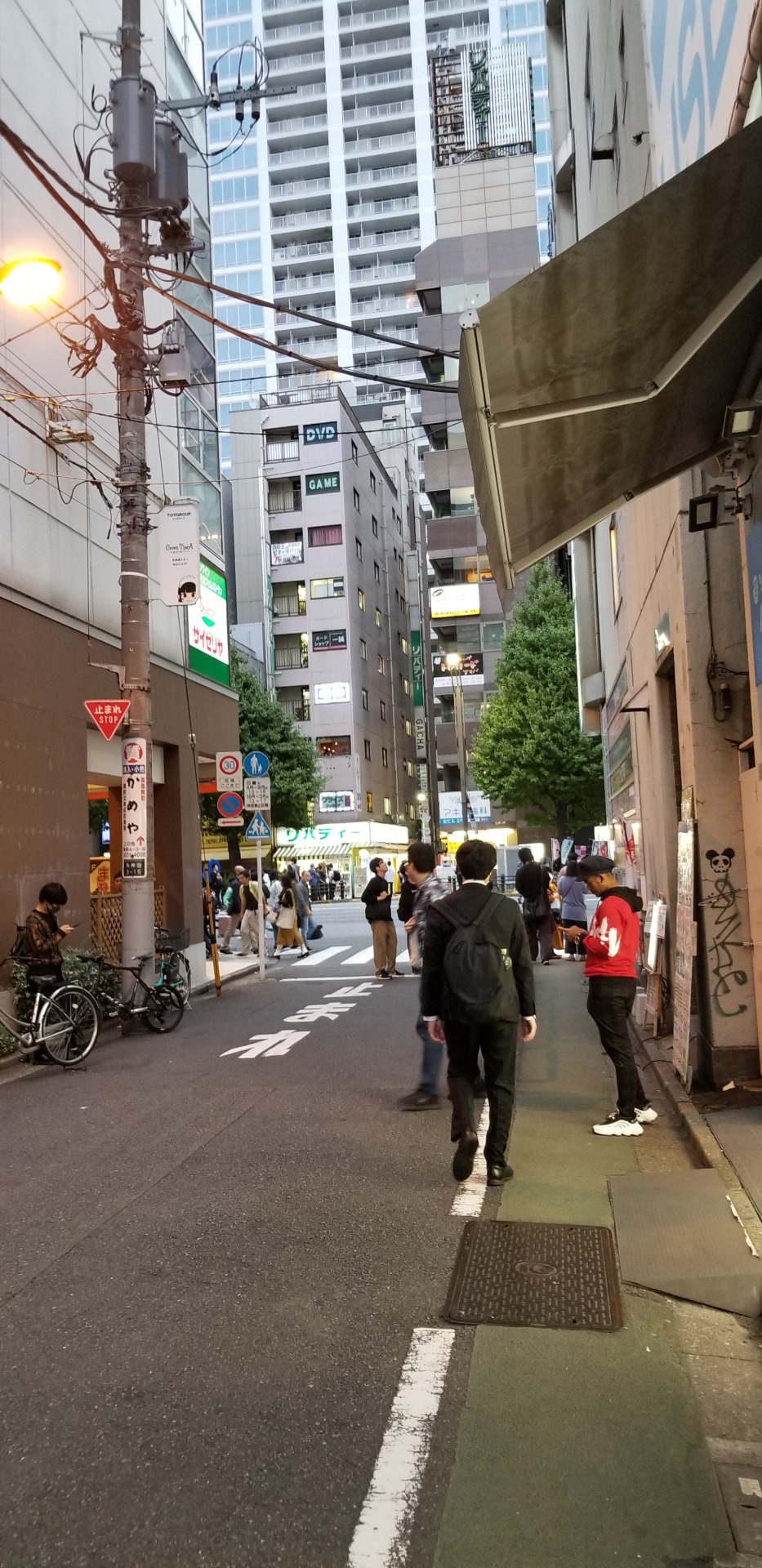
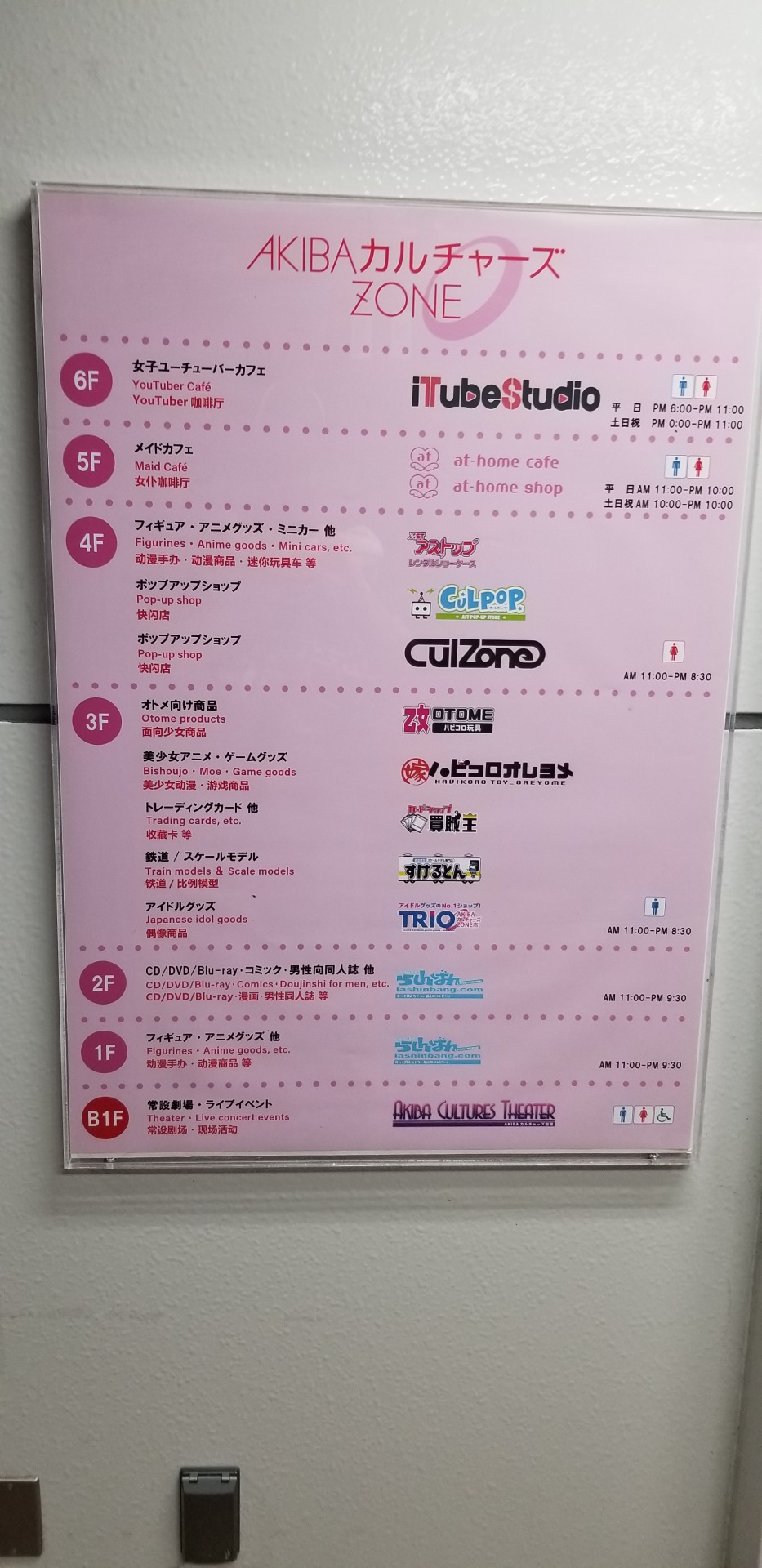

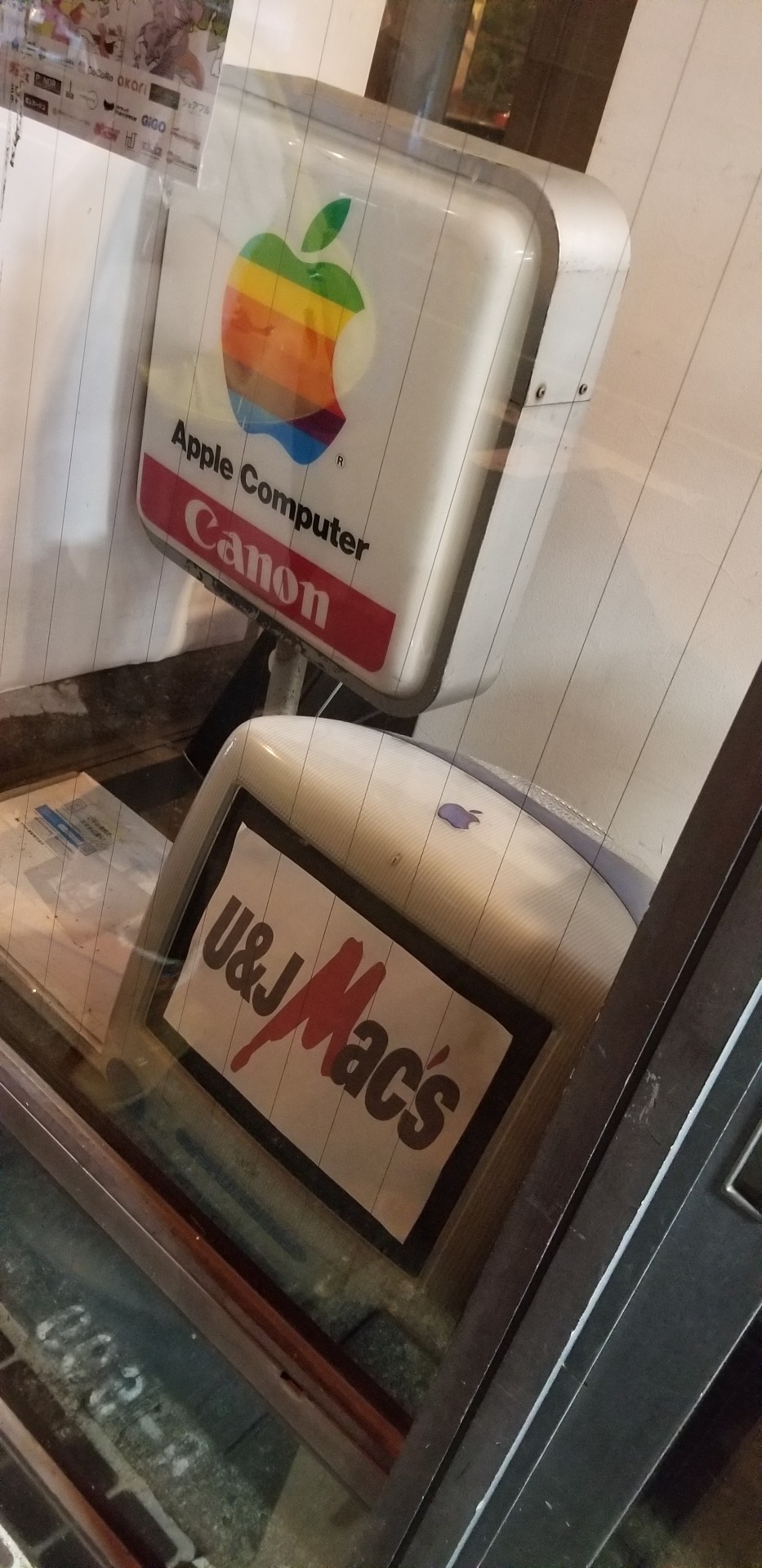

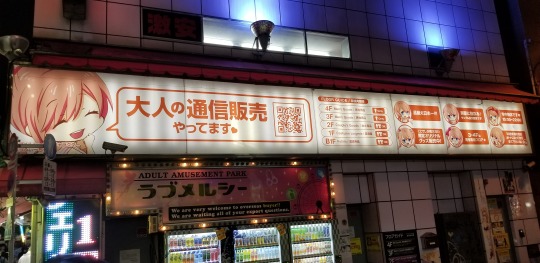
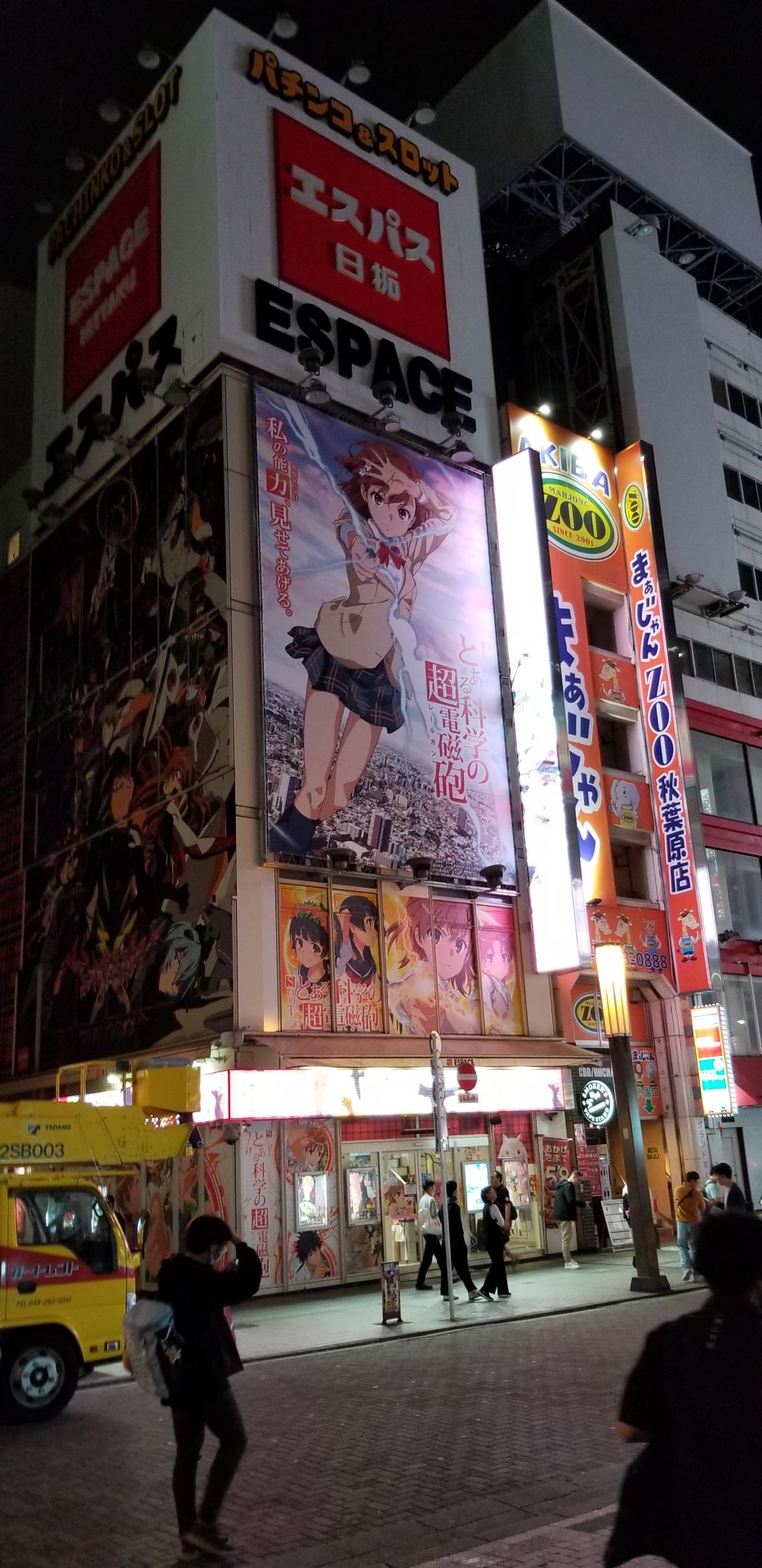


Sega, where'd you go?
See you next time!
2 notes
·
View notes
Text
Hi everyone! 🤗
I’m planning a 20D/19N trip to Japan in June 2025 with my then almost-13-year-old son, and I’m looking for some suggestions for off-the-beaten-path places and experiences.
We’ll start with three nights in Tokyo and then head to Nikko for two nights. After that, we’re considering traveling down towards Kyoto and Osaka. We’re debating whether to rent a car for about a week to explore areas that are less crowded and more unique. Pick up and return in Tokyo OR Pick up and return in Osaka.
If you have any recommendations for hidden gems, small towns, scenic drives, or interesting activities we could include, I’d love to hear them! We’re especially interested in:
Nature and quieter spots
Historical or cultural experiences
Local food (mom) and fun stuff for a teenager.
Maybe someone here have done a trip similar to this and want to share their itinerary 🙏.
We’re also open to skipping the car rental if public transportation can easily get us to these kinds of places. Thanks in advance for your help! That sounds like a fantastic trip! Here are some suggestions for off-the-beaten-path experiences and scenic spots you might enjoy:
Around Tokyo & Nikko
Okutama (West Tokyo): A quiet escape with hiking trails, waterfalls (like Hatonosu Gorge), and hot springs.
Edo Wonderland (near Nikko): A theme park recreating the Edo period with samurai, ninja shows, and historical experiences your son might find fun.
Scenic Drives Near Tokyo
Nikko to Chuzenji Lake and Irohazaka Winding Road: A beautiful, historic drive with stunning views, especially if you include Kegon Falls.
Hakone or Fuji Five Lakes: Scenic routes around Mount Fuji, offering great spots for nature, local food, and some fun activities like boat rides or ropeways.
Kyoto to Osaka Region
Uji (between Kyoto and Nara): Known for its tea culture, Byodoin Temple, and serene riverside walks.
Miyama (north of Kyoto): A charming rural village with traditional thatched-roof houses.
Car Rental: Unique Routes
If you rent a car, here are a few itineraries:
1. Shirakawa-go and Gokayama (Alps Region): Gorgeous historic villages with a peaceful vibe. Stay in a traditional gassho-zukuri house.
2. Ise-Shima Peninsula: A blend of scenic coastal drives, the famous Ise Grand Shrine, and fresh seafood.
Public Transport-Friendly Gems
Kinosaki Onsen (near Kyoto): A beautiful onsen town where you can enjoy public baths, stroll in yukata, and sample local crab dishes.
Kurashiki (near Okayama): An artsy town with canals, charming streets, and hands-on workshops.
Teen-Friendly Ideas
Osaka: Universal Studios, the Pokémon Center, and try Takoyaki at a local stall.
Arashiyama (Kyoto): The bamboo grove, monkey park, and renting bikes along the riverside.
Let me know if you’d like help refining your itinerary! That sounds like a fantastic trip! Here are some suggestions for off-the-beaten-path experiences and scenic spots you might enjoy:
Around Tokyo & Nikko
Okutama (West Tokyo): A quiet escape with hiking trails, waterfalls (like Hatonosu Gorge), and hot springs.
Edo Wonderland (near Nikko): A theme park recreating the Edo period with samurai, ninja shows, and historical experiences your son might find fun.
Scenic Drives Near Tokyo
Nikko to Chuzenji Lake and Irohazaka Winding Road: A beautiful, historic drive with stunning views, especially if you include Kegon Falls.
Hakone or Fuji Five Lakes: Scenic routes around Mount Fuji, offering great spots for nature, local food, and some fun activities like boat rides or ropeways.
Kyoto to Osaka Region
Uji (between Kyoto and Nara): Known for its tea culture, Byodoin Temple, and serene riverside walks.
Miyama (north of Kyoto): A charming rural village with traditional thatched-roof houses.
Car Rental: Unique Routes
If you rent a car, here are a few itineraries:
1. Shirakawa-go and Gokayama (Alps Region): Gorgeous historic villages with a peaceful vibe. Stay in a traditional gassho-zukuri house.
2. Ise-Shima Peninsula: A blend of scenic coastal drives, the famous Ise Grand Shrine, and fresh seafood.
Public Transport-Friendly Gems
Kinosaki Onsen (near Kyoto): A beautiful onsen town where you can enjoy public baths, stroll in yukata, and sample local crab dishes.
Kurashiki (near Okayama): An artsy town with canals, charming streets, and hands-on workshops.
Teen-Friendly Ideas
Osaka: Universal Studios, the Pokémon Center, and try Takoyaki at a local stall.
Arashiyama (Kyoto): The bamboo grove, monkey park, and renting bikes along the riverside.
Let me know if you’d like help refining your itinerary!That sounds like a fantastic trip! Here are some suggestions for off-the-beaten-path experiences and scenic spots you might enjoy:
Around Tokyo & Nikko
Okutama (West Tokyo): A quiet escape with hiking trails, waterfalls (like Hatonosu Gorge), and hot springs.
Edo Wonderland (near Nikko): A theme park recreating the Edo period with samurai, ninja shows, and historical experiences your son might find fun.
Scenic Drives Near Tokyo
Nikko to Chuzenji Lake and Irohazaka Winding Road: A beautiful, historic drive with stunning views, especially if you include Kegon Falls.
Hakone or Fuji Five Lakes: Scenic routes around Mount Fuji, offering great spots for nature, local food, and some fun activities like boat rides or ropeways.
Kyoto to Osaka Region
Uji (between Kyoto and Nara): Known for its tea culture, Byodoin Temple, and serene riverside walks.
Miyama (north of Kyoto): A charming rural village with traditional thatched-roof houses.
Car Rental: Unique Routes
If you rent a car, here are a few itineraries:
1. Shirakawa-go and Gokayama (Alps Region): Gorgeous historic villages with a peaceful vibe. Stay in a traditional gassho-zukuri house.
2. Ise-Shima Peninsula: A blend of scenic coastal drives, the famous Ise Grand Shrine, and fresh seafood.
Public Transport-Friendly Gems
Kinosaki Onsen (near Kyoto): A beautiful onsen town where you can enjoy public baths, stroll in yukata, and sample local crab dishes.
Kurashiki (near Okayama): An artsy town with canals, charming streets, and hands-on workshops.
Teen-Friendly Ideas
Osaka: Universal Studios, the Pokémon Center, and try Takoyaki at a local stall.
Arashiyama (Kyoto): The bamboo grove, monkey park, and renting bikes along the riverside.
Let me know if you’d like help refining your itinerary!
0 notes
Photo

Cláudia Varejão, 2016 Portugal/Switzerland Japanese with English subtitles 113 minutes
Cláudia Varejão’s intimate documentary focuses on women living in a small town off of Japan’s Shima Peninsula who have carried on the 2,000-year-old tradition of diving for pearls, sea urchins, and abalone. Challenging notions of how Japanese females are supposed to behave, the Ama (“sea women”) dive without scuba gear or oxygen tanks, wearing minimal protection. Like the Ama probing the ocean’s depths, Varejão’s camera examines the minutiae of the women’s day-to-day existence: their hair curlers, the sea salt clinging to their skin, and assorted daily feminine tasks that are all too often taken for granted. Winner of best Portuguese documentary at DocLisboa.
_____
Ama-San review – a deep dive into Japan's fisherwomen culture
Ama-San: Diving into the abyss of femininity - Cineuropa
#cláudia varejão#ama-san#2016#cinematic still#film#still#stills#ama#sea women#shima peninsula#japan#femininity
38 notes
·
View notes
Text

-547th Night Fighter Squadron ramp at Lingayed Field, Luzon. | Photo: USAAF Photographer

-P-61B Black Widow from the 547th Night Fighter Squadron landing on Lingayen airstrip. | Photo: USAAF Photographer
FLIGHTLINE: 20 - 547th Night Fighter Squadron / Northrop P-61 Black Widow

-Unit patch for the 547th Night Fighter Squadron. | Illustration: USAAF
The 547th Night Fighter Squadron was formed on March 1st 1944 at Hammer Field, California, and was the first such group formed in California as well as the first to be equipped with Northrop P-61 Black Widows. The 547th shipped out to Owi Airfield in what was then the Netherlands East Indies in August ‘44, and flew non-radar equipped P-38 night fighters until their P-61s arrived in September. The squadron was tasked with intercepting Mitsubishi G4M “Betty” bombers, which had been forced into almost exclusively attacking at night due to US fighter coverage. The Bettys had been modified with superchargers, which allowed them to fly above the P-38s used by the USAAF, and thus the introduction of the P-61 proved to be a rude surprise to the Japanese planes, which did not take evasive maneuvers during the initial intercepts by the newer plane. After moving to Lingayen in 1945, the Black Widows of the 547th swept Japanese planes, which had been operating with impunity during the night, from the skies. The P-61s were later field modified to carry external stores, allowing them to carry drop tanks to increase their range, or bombs, napalm canisters, and rockets, allowing them to carry out night attacks on Japanese air fields or shipping. The squadron moved on to Ie Shima Airfield located near Okinawa in August of 1945 to begin night attacks in support of Operation Downfall, the planned invasion of the Home Islands. The Atomic Bombing of Hiroshima and Nagasaki removed the need for the invasion however, and the 547th was instead moved to Honshu as part of the occupation forces, remaining there until February of ‘46.

-Orthograph of the P-61. | Illustration: Northrop
The Northrop P-61 Black Widow was the first purpose-built night fighter in US service, as well as the first designed to use radar. Design work began in 1940 in response to a British request for an aircraft combining high-speed, high-altitude and long duration so as to intercept Nazi night bombers. A similar USAAC/F request soon developed, to which Northrop also submitted their proposal. The initial idea for what became the P-61 was massive, 45 feet long, with a 66ft wingspan and weighing almost twenty-three thousand pounds fully loaded. Armament was projected to be two turrets, one in the nose and another in the tail, each featuring four .50 cal Ma Deuce machine guns. The turrets were eventually moved to dorsal and ventral positions on the main gondola, but the ventral turret was later replaced by four 20mm cannon mounted in the belly, which increased firepower without the need for calculating and maintaining their convergence point, as is necessary for wing-mounted guns. The SCR-720 radar had a range of 5 miles in airborne intercept mode, and could also function as a navigational aid or as an airborne beacon/homing device. The radar could also work in concert with IFF units. The radar operator would handle the initial scanning and guidance, before handing over final intercept to the pilot. The turret proved to be difficult to install, and the decision was made to switch from the GE ring mount to a pedestal mount as used by B-17, -24, -25 and -29 bombers. This later proved to cause more issues as components were in short supply, and the larger bombers had priority. As a result, 308 A and B model P-61s, more than half of the entire run of 706 total aircraft, were produced without a turret. All in all, fourteen separate models of the P-61 were produced before the war ended, with the fifteenth, the P-61C, probably being the best version of the plane, with turbosupercharged R-2800-73 engines providing a top speed of 430mph and a ceiling in excess of 30,000 feet. Only 41 were completed out of a 500 planned P-61Cs, and none saw battle. After the war, one P-61B was utilized for tests of a captured German ejection seat, with volunteer Sgt. Lawrence Lambert successfully ejected from the plane at 302mph and 7,800 feet. Other aircraft were loaned to the Navy to be used as motherships for the Gorgon IV ramjet-powered missile program. Another P-61A was used in attempt to qualify the type for carrier operations, though the Widow was never flown from a carrier. A number of P-61s were used by NACA, the US Weather Bureau, the USAAF/USAF and Navy in the Thunderstorm Project from ‘46 to ‘49, with their size and onboard radar allowing the Widows to navigate into and through the worst parts of storms.

-P-61s lined up to take part in NOAA's Thunderstorm Project. | Photo: NOAA

One of the Black Widows used to test the Gorgon IV air-to-surface missile. | Photo: US Navy
An intriguing side note to the Black Widow story is the F-15 (later RF-61) Reporter, a photo recon variant which was ordered to fill in for, and later replaced, the Hughes XF-11.

-An F-15A later used in “Operation Thunderstorm”Photo: NOAA Photographer
The first F-15 was based on the XP-61E, but the production models used the wings, engines and tail from the P-61C mated to an all-new central fuselage. The Reporter mounted six cameras, operated by the crew member in the second seat. Both seats featured controls, so either could fly the airplane on long missions. Thirty-six F-15s were completed out of an contracted run of 175, with the remainder canceled as the design was being rapidly outpaced by jet aircraft. All but 9 of the planes were shipped to Japan, and as part of the 8th Photographic Reconnaissance Squadron, was used, along with the F-13, a recon version of the B-29, to photograph and map the Japanese Home Islands. In addition, maps were made of the Korean peninsula, which proved invaluable for UN forces at the start of the Korean War. The Reporters were retired from USAF service by 1949, though some were drafted into the Thunderstorm Project along with their P-61 cousins. One F-15A was used by the Ames Aeronautical Lab to drop scale model aircraft until 1953, after which it was sold, and then sold again to a Mexican company for use in aerial survey work. It was returned to the US in 1964 and refitted for aerial firefighting.

-Photo: Unknown
On 6 September 1968, Ralph Ponte, one of three civilian pilots to hold a rating for the F-15, was flying a series of routine Phos-Chek drops on a fire raging near Hollister, California. In an effort to reduce his return time Ponte opted to reload at a small airfield nearer the fire. The runway was shorter than the one in Fresno, and despite Ponte reducing his load, hot air from the nearby fire reduced the surrounding air pressure and rendered the aircraft overweight. Even at full power the Reporter had not rotated after clearing the 3,500 ft (1,067 m) marker, and Ponte quickly decided to abort his takeoff. He made every effort to control the hurtling craft, but the Reporter careened off the runway and through a vegetable patch, before striking an embankment which tore off the landing gear. The aircraft then slid sideways, broke up, and caught fire. Ponte scrambled through the shattered canopy unhurt, while a firefighting TBM Avenger dropped its load of Phos-Chek on the plane’s two engines, possibly saving Ponte’s life. The F-15 was deemed to be too badly damaged to rebuild, and was soon scrapped, bringing an end to the career of one of Northrop’s most successful designs.���
#aircraft#aviation#avgeek#airplanes#airplane#aviation history#usaaf#usaf#Northrop#Northrop P-61#p 61 black Widow#p61 black Widow#Northrop p61#ww2#wwiihistory#wwii aircraft#wwii#us navy
159 notes
·
View notes
Text
Common Japanese Surname Kanji
In conjunction with my “Creating a Japanese name for your character” post, I decided to make a list of the common kanji found in traditional Japanese surnames (as well as a couple of characters that have those kanji in their names!). If you’re looking for a kanji to fill out your character’s family name (if you only have one kanji and need another one, for example) or if you’re looking for some help or inspiration, hopefully this post will help!
井 (i) - well. Common names include Fukui and Inoue. Characters include Inui Ryō (Hound Dog).
上 (kami, gami, ue) - above/top/upper. Common names include Ueda, Tanoue, Makami, Mogami, and Kamigawa. Characters include Kaminari Denki.
岡 (oka) - hill/ridge. Common names include Matsuoka, Yoshioka, and Okamoto.
川 (kawa, gawa) - river. Common names include Ishikawa, Sakigawa, and Kawakami. Characters include Tamakawa Sansa (the cat quirk police officer) and Tsuchikawa Ryūko (Pixie-Bob).
木 (ki, gi) - tree. Common names include Suzuki, Mitsugi, and Kimura. Characters include Shigaraki Tomura, Yagi Toshinori, and Sasaki Mirai (Sir Nighteye), among others.
口 (kuchi, guchi) - mouth/entrance. Common names include Kawaguchi, Yamaguchi, Edakuchi, and Kuchiro. Characters include Kōda Kōji (using an alternate reading) and Iguchi Shūichi (Spinner).
崎 (saki, zaki) - cape/peninsula. Common names include Hamasaki, Kawasaki, Miyazaki, and Sakimoto. Characters include Shiozaki Ibara and Chisaki Kai (Overhaul), among others.
沢 or 澤 (sawa, zawa) - swamp/marsh/mountain stream. Common names include Kurosawa, Serizawa, and Sawase. Characters include Aizawa Shōta (Eraserhead), among others.
下 (shita, jita) - under/below. Common names include Matsushita and Okajita.
島 (shima, jima) - island. Common names include Mizushima, Nakajima, and Shimanose. Characters include Maijima Higar (Power Loader) and Kirishima Eijirō, among others.
田 (ta, da) - rice field. Common names include Yamada, Fujita, and Tamura. Characters include Kōda Kōji, Mineta Minoru, Īda Tenya, Yamada Hizashi (Present Mic), Shishida Jūrōta, Shōda Nirengeki, Hakamata Tsunagu (Best Jeanist), Awata Kaoruko (Bubble Girl), and Tobita Danjūrō (Gentle Criminal), among others.
藤 (tou, dou, fuji) - wisteria. Common names include Saitou, Itou, Kudou, and Fujimoto. Characters include Satō Rikidō and Kendō Itsuka, among others.
中 (naka) - inside/middle/within. Common names include Tanaka and Nakamura. Characters include Irinaka Jōi (Mimic) and Nakagame Tatami (Turtle Neck), among others.
橋 (hashi, bashi) - bridge. Common names include Takahashi and Hashimoto. Characters include Yotsubashi Chikara (Destro) and Yotsubashi Rikiya (Re-Destro).
原 (hara, bara, wara) - field. Common names include Nakahara, Fujiwara, and Harazumi. Characters include Kaibara Sen, Bubaigawara Jin (Twice), and Kamihara Shinya (Edgeshot), among others.
辺 (be) - border. Common names include Watanabe and Sasabe.
丸 (maru) - round/circle. Common names include Ichimaru, Kazemaru, and Marukame.
村 (mura) - village. Common names include Okumura, Himura, and Murakami. Characters include Shimura Tenko (Shigaraki Tomura), Shimura Nana, and the rest of the Shimura family.
本 (moto, hon) - base/origin. Common names include Miyamoto, Sakamoto, and Honda. Characters include Nemoto Shin (one of the Eight Bullets of the Shie Hassaikai).
森 (mori) - forest. Common names include Fujimori, Sugimori, and Morishita. Characters include Komori Kinoko.
林 (yashi, hayashi) - forest/woods. Common names include Kobayashi.
山 (yama) - mountain. Common names include Akiyama, Koyama, and Yamamoto. Characters include Aoyama Yūga, Ishiyama Ken (Cementoss), Kayama Nemuri (Midnight), Yamada Hizashi (Present Mic), Takeyama Yū (Mt. Lady), and Usagiyama Rumi (Mirko), among others.
A reminder just in case anyone needs it: Japanese surnames typically describe a place or the origin of the family it belongs to, for instance if a family came from a “forest origin”, their name might be Morimoto. Or someone from a “snowy village” would be Yukimura. MHA names are not quite so literal or realistic (like Usagiyama “rabbit mountain”), and are meant to be a little more fun.
Keep in mind that this is not a complete or comprehensive list, and that these are NOT all the readings for the kanji. Some of these kanji have different nanori that were not included in this list.
Also a quick note in case anyone was wondering:
When to use KAMI vs. GAMI, SAWA vs. ZAWA, etc.?
Sometimes when you put two kanji next to each other in a name, the second kanji has a different pronunciation/reading. Why? The short answer is, it’s easier to pronounce that way. So some short rules:
Putting two or more kanji together is like a compound word in English, and when you “link” those kanji together, sometimes the latter kanji sounds different (NEVER the first kanji though).
Most kana have a “voiced” (dakuten) version and some have a “half-voiced” (handakuten) version, but it’s mostly the “voiced” version that occurs in pronunciation/spelling when “linking” two kanji.
“ka” ⟶ “ga”, “ki” ⟶ “gi”, etc.
“sa” ⟶ “za” (note: “shi” ⟶ “ji”)
“ta” ⟶ “da” (note: “chi” ⟶ “ji/dji” and “tsu” ⟶ “zu/dzu”)
“ha” ⟶ “ba” or “pa” (though “pa” isn’t used for linking, it’s the “half-voiced” sound)
In the list of kanji above, the 2nd “spelling” for the kanji is the “voiced” pronunciation, for your ease!
Not every linked kanji will change its sound. It’s probably subjective to whoever came up with the family name to begin with, but basically the sounds will be voiced if the person who has the name thinks it flows better as a voiced sound.
Remember that while you might not hear a huge difference in “Ota” and “Oda” or something, there are different nuances in Japanese language that native speakers will pick up that you will not. You might not understand why some names “link” the sounds and others don’t, but to native speakers it makes sense.
In the case of MHA names though? I’d say don’t worry about it too much. Go with the flow of whatever sounds best--or whatever puns the best. (Like Mina Ashido’s surname! Typically it’s pronounced Ashito, but Ashido sounds a lot more like “acid” than Ashito does, right? :D)
Want to read more on the subject of name kanji, know about their history/culture, and look at some examples? Here’s a couple links to a few other sites that list more kanji and readings than what was included on this list too, as well as more info on the spellings and kanji “linking”: [ 1 2 3 4 5 6 ]
75 notes
·
View notes
Video
20250214 Ise + Shima 4 by Bong Grit Via Flickr: 安乗崎灯台の中から。右の格子の影が面白い形に。 Photo taken at Anorisaki Lighthouse, Shima city, Mie pref.
#Horizon#Lighthouse#Anorisaki Lighthouse#Anorisaki#White lighthouse#Richard Henry Brunton#Sea#Water#Sky#Blue sky#The Pacific Ocean#Shima peninsula#Ise#Mie#Japan#Nikon#Nikon Df#COSINA#COSINA Voigtländer COLOR-SKOPAR 20mm F3.5 SL2 N Aspherical#flickr
3 notes
·
View notes
Text
Beach fun around the Tango Peninsula, Kyoto Prefecture.
Beach fun around the Tango Peninsula, Kyoto Prefecture.

Scenery around Shiro-shima (Castle Island), on the Sea of Japan in Kyōtango, Kyoto Prefecture, Japan.

On Shiro-shima island is a small shinto shrine, Mishima Shrine along the Sea of Japan in Kyōtango, Kyoto Prefecture, Japan.

On Shiro-shima Island is a large Buddhist statue encircled by a small pond; along the Sea of Japan in Kyōtango, Kyoto Prefecture, Japan.

On Shiro-shima island is a…
View On WordPress
21 notes
·
View notes
Text
Assassination classroom: Class E classmates name meanings
In case if you didn’t know if I didn’t add the names its because I didn’t know what kanji with hiragana and katakana to use for there names
Yūma Isogai 磯貝 悠馬 Yuu (悠) means "distant, leisurely,permanence” ma (馬) means “horse” Iso (磯) means “seashore” gai (貝) is an abbreviation of “kai” means “shellfish”
Taiga Okajima 岡島 大河 Tai (大) means large or big and ga (河) is an abbreviation of ka means “river” together means “big river” Oka (岡) means “hill” jima(島) is the abbreviation of shima means “island”
Hinata Okano 岡野 ひなた Oka (岡) means “hill” and no means “an area, field”
Manami Okuda 奥田 愛美 mana (愛) means “love, affection” and mi (美) means "beauty" together means “affectionate love” oku (奥) means “inside,inner depths,one's heart, true feelings, heart, interior” and da (田) means “rice paddy”
Megu Kataoka 片岡 メグ Kata (片) means “one part of a pair” oka (岡) means “hill”.
Yukiko Kanzaki 神崎 有希子 Yu (有) means “possession” ki (希) means “hope” and ko (子) means “child” Kan (神) means “a deity or god” and zaki (崎) the abbreviation of saki means “peninsula; promontory; cape; spit”
Masayoshi Kimura 木村 正義 Masayoshi (正義) means “justice” in kanji his real name Justice so the kanji is used to fit it. Ki (木) means “tree” and mura (村) means “village”
Hinano Kurahashi 倉橋 陽菜乃 Hi (陽) means “the sun”, na (菜) means "vegetables, greens" and no (乃) is “a possessive particle” means “of” Kura (倉) means ”Storehouse”and hashi (橋) means “bridge”
Sōsuke Sugaya 菅谷 創介 So (創) means "genesis, hurt, injury, originate, start, wound" and suke (介) means "concern oneself with, jammed in, mediate, shellfish”. Suge (菅) means “sedge” and ya (谷) means “valley”.
Tomohito Sugino 杉野 友人 Tomo (友) means “friend” and hito (人) means “person” Sugi (杉) means “a Japanese cedar” and no (野) means “an area, field”
Kōtarō Takebayashi 竹林 孝太郎 Ko (孝) means “filial piety,mourning” and taro (太郎) means “eldest son or strong, heroic, masculine” used at the end of boys names Take (竹) means “bamboo” and bayashi (林) is the is the abbreviation of hayashi means “woods”
Ryūnosuke Chiba 千葉 龍之介 Ryu (龍) means "dragon”,no (之) means “a possessive marker” and suke (介) means "forerunner, herald" Chi (千) means “thousand” and ba (葉) the abbreviation of ha means “leaf” all together means "thousand leaves"
Ryōma Terasaka 寺坂 竜馬 Ryo (竜) means “dragon”, ma (馬) means “horse” together means “Dragon and horse” Tera (寺) means “a Buddhist temple”, saka (坂) means “slope, hill”
Rio Nakamura 中村 莉桜 Ri (莉) means "white jasmine" o (桜) means "cherry blossom" Naka (中) means “middle” and mura (村) means “village”
Kirara Hazama 狭間 綺羅々 Ki (綺) means “thin twilled silk fabric”, ra (羅) means “lightweight fabric” and ra (々) is a repeater of ra Kirara means something that is “like twinkle or something shiny” (キララ) Hazu (狭) means “cramped, narrow, contract, tight” and ma (間) means “space and room”
Rinka Hayami 速水 凛香 Rin (凛) means “dignified,severe, cold” and ka (香) means “a pleasant smell; a scent, a fragrance, an aroma” Haya (速) means “fast, speedy” and mi (水) means “water”
Sumire Hara 原 寿美鈴 Su (寿) means “longevity, long life,congratulations”, mi (美) means “beauty” and re (鈴) means “a bell, chime” Hara (原) means “meadow, plain, field”
Yuzuki Fuwa 不破 優月 Yu means “tenderness, excel, surpass, actor, superiority, gentleness” and zuki means “moon” together means “Tender moon”. Fu means “un-; non-; negative prefix” and wa means “break,cut”
Hiroto Maehara 前原 陽斗 Hiro means “the sun” and to means “Big Dipper, ten sho (vol), sake dipper, dots and cross radical (no. 68) ” Mae means “the front” and Hara (原) means “meadow, plain, field”
Kōki Mimura 三村 航輝 Ko (航) means “navigate, sail, cruise, fly” and ki (輝) means “radiance, shine, sparkle, gleam, twinkle” Mi (三) means “three” and mura (村) means “village”
Takuya Muramatsu 村松 拓哉 Taku (拓) means "expand, open, support" and ya (哉) “an exclamation” Mura (村) means “village” and matsu (松) means “a pine tree”
Tōka Yada 矢田 桃花 To means “peach” and ka means “flower” Ya (矢) means “arrow” and da (田) means “rice paddy”
Taisei Yoshida 吉田 大成 Tai (大) means “big or large” and sei (成) means “to become,to do something” Yoshi (吉) means “lucky (or good)” and da (田) means “rice paddy” together means “lucky (or good) rice paddy”
Ritsu 律 Ritsu’s (律) name means “law” her name is taken from Jiritsu (自律) meaning Autonomy
Itona Horibe 堀部 糸成 (イトナ) Ito means “thread” and na (成) means “to become,to do something” Hori means “ditch, canal,moat” and be means “section, bureau, dept, class, copy, part, portion, counter for copies of a newspaper or magazine”
10 notes
·
View notes
Photo

Ie Shima from the Motobu Peninsula, Okinawa, Japan [OC] [1716x2082] via /r/EarthPorn https://ift.tt/3sgLw3t
0 notes
Text
10 out of this world hotels for stargazing holidays
Although astronomy has been around since ancient times, turning to the sky for a little bit of escapism or perspective seems to be needed now more than ever. And with lower levels of light pollution recorded during lockdowns around the world, the night skies are currently at their clearest in years. Whether you’re an amateur astronomer or a cosmic expert, here are ten of the most beautiful places in the world to seek solace in the stars.
Hotel Rangá, Hella – Iceland

A cross between a hunting lodge and palatial log cabin, Hotel Rangá is just two hours south-east of Reykjavik and yet feels a world away in its Icelandic wilderness setting of volcano views and thermal springs. Boasting a state-of-the-art observatory with a pair of powerful telescopes and a roll-down roof, guests are offered a Northern Lights wake-up call along with Golden Circle-proof clothing and bespoke blankets to keep warm while the sky comes alive.
Trout Point Lodge, Nova Scotia – Canada

Experience North America’s darkest skies at Trout Point Lodge, a secluded nature sanctuary on the banks of the Tusket River and next to the Tobeatic Wilderness Area, a certified Starlight Reserve. Recognised as the world’s first Starlight Hotel by the UNESCO-supported Starlight Foundation in 2014, this wildly luxurious retreat is home to advanced telescopic equipment (including an astronomical laser pointer…!), knowledgeable sky-guides, and a stargazing platform set back from the surrounding forest, offering nearly unobstructed 360-degree views of the sky.
Shima Kanko Hotel: the Bay Suites, Ise-Shima – Japan

With a water-side setting that inspires instant calm, this serene all-suite Japanese retreat is peacefully placed on the shores of Ago-Wan Bay. Enjoying some of Japan‘s most pristine skies, thanks to its protected location in the Ise-Shima National Park, Shima Kanko Hotel‘s star sommeliers guide guests on a twinkling journey through the night skies of Kashikojima.
Paradise Cove Boutique Hotel, Anse La Raie – Mauritius

A tropical hideaway beside an impossibly blue lagoon, Paradise Cove Boutique Hotel is as tranquil as its name suggests. Join the resort’s resident astronomer for a guided star-spotting session each Monday evening on The Peninsula, sitting comfortably on beanbags with a cocktail in hand and surrounded by glowing lanterns. Brush up on your constellation knowledge with a star location map, which can be found in every guest room.
Dar Ahlam, Ouarzazate – Morocco

Sleep beneath the stars in a private luxury tent at this traditional Kasbah, after a day spent exploring the dunes of the Sahara on camel-back. Dar Ahlam offers a week-long, once-in-a-lifetime opportunity to venture into the desert, following the oases of southern Morocco. Return to a haven of manicured lawns and fragrant almond blossom, to dine in the gardens under an uninterrupted starry sky.
Cougar Ridge Lodge, Utah – USA

Surrounded by red rock formations and set under big star-filled skies, the luxury casitas and one spectacular lodge of Cougar Ridge sit at the gateway to Capitol Reef National Park in Utah, one of the best stateside sky viewing areas. The nearby town of Torrey has officially been awarded ‘Dark Sky Community’ status, so stargazing here is off the scale – and the ethereal Milky Way often makes an appearance during the summer Sky Parties hosted by the Lodge.
Arctic Bath, Harads – Sweden

This one-of-a-kind hotel immerses guests in the postcard-worthy scenery of Swedish Lapland: its frost-crowned forests, where moose and reindeer leave tracks in the snow. Glass walls, floating walkways and sky-gazing decks connect the inside with the great outdoors at Arctic Bath, with its striking over-water cabins. Accompany adventure photographer Håkan Hjort into Northern Lights territory to capture this natural phenomenon in a picture-perfect setting of snow-covered trees and frozen creeks.
Milaidhoo Island Maldives, Baa Atoll – Maldives

Devote your days to total relaxation at Milaidhoo Island, a boutique beach resort in the UNESCO World Biosphere Reserve of Baa Atoll. When the sun sets over the mirror flat sea and palm-fringed floating villas, the natural beauty of the night sky comes alive in the endless waters’ reflection. Find a secluded spot on any one of the island’s secluded sandbanks, for a movie night or private dinner beneath the stars – you can even request a cosy cabana to be set up for a blissful balmy night’s sleep.
Castle Hot Springs, Arizona – USA

As you arrive at Castle Hot Springs, you can almost hear the thermal springs bubbling up all around this boutique retreat – creating the sense of a natural, luxury oasis amid the sun-soaked canyons. Star-seekers should opt for the Sky View Cabins, which are set on an elevated foundation overlooking the lush grounds with breathtaking views of the surrounding Sonoran desert. Each cabin has an expansive wood deck equipped with a telescope for stargazing and a private outdoor claw-foot tub ready to be filled with natural hot spring water.
Petit St. Vincent, Saint Vincent & the Grenadines – Caribbean

An 115-acre private island paradise in the southernmost Grenadines, it simply doesn’t get any more exclusive than Petit St. Vincent. With just 22 cottages dotted about the sandy shores and windswept bluffs, this remote resort was social distancing long before this year’s global pandemic. Without the distractions of in-room technology, and with limited internet available on the island, guests are invited to completely switch off from the rest of the world – and enjoy the natural beauty of this Caribbean castaway in all its starry-skied splendour.
The post 10 out of this world hotels for stargazing holidays appeared first on Small Luxury Hotels.
from Small Luxury Hotels https://ift.tt/3ok70XV Publish First on
0 notes


